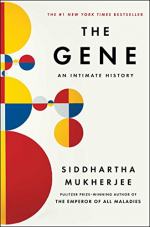|
This section contains 906 words (approx. 3 pages at 400 words per page) |

|
Summary
In the late 1800s, scientists were still struggling to find an answer to the question of heredity, unaware of Mendel's work. At the same time, experimental proof against Darwin's theories on heredity was mounting. After experimenting on mice, an embryologist named August Weismann suggested that perhaps hereditary information was contained exclusively in sperm and eggs and not collected from throughout the body as previously suggested by others (including Darwin). Weismann named this hereditary material in sperm and egg "germplasm."
A Dutch botanist named Hugo de Vries then wondered about the nature of germplasm and its functions, not having read Mendel's paper. He began to conduct his own plant experiments, concluding that "features seemed to be encoded by an independent, discrete piece of information that moved from one generation to the next" (58). He named the particles of hereditary information "pangenes." As...
(read more from the "A Certain Mendel" (Part One) Summary)
|
This section contains 906 words (approx. 3 pages at 400 words per page) |

|




